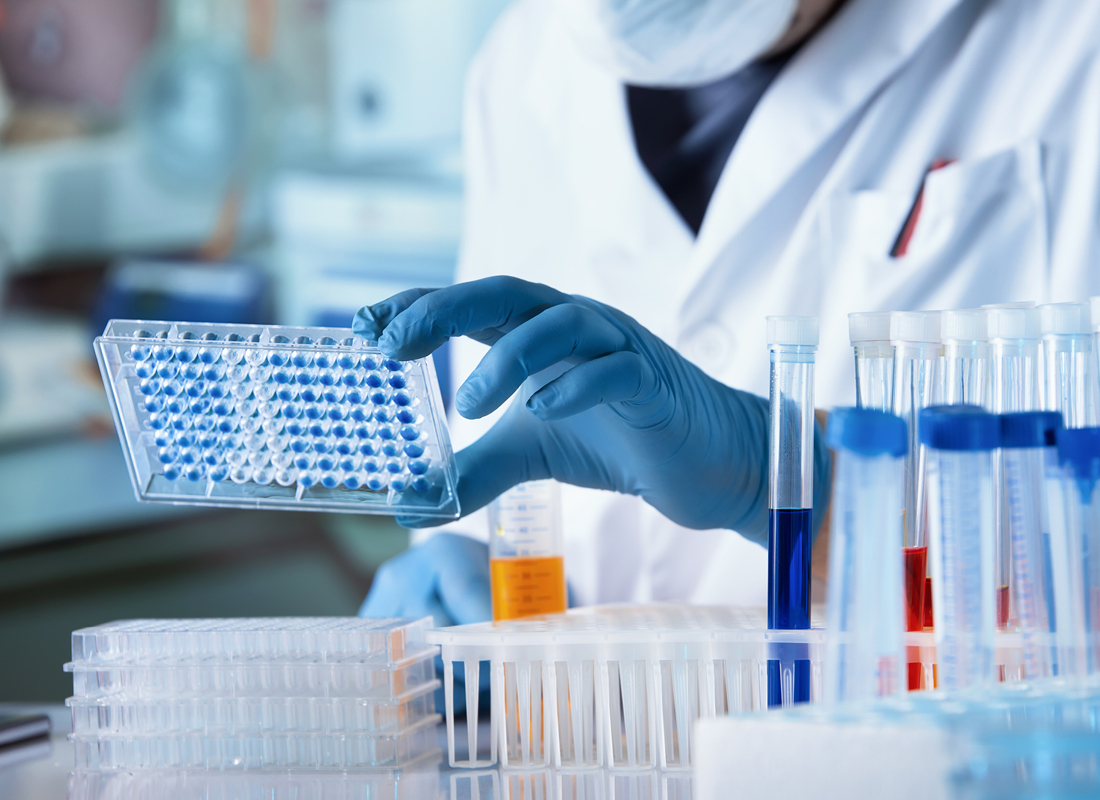LDTs Around the World
Curious about how laboratory-developed tests are regulated in other countries? We compare in-house test guidance across six regions

The U.S. Food and Drug Administration has made headlines with its final rule on laboratory-developed tests (LDTs), which explicitly lays out the organization’s authority over LDT regulation and enforcement.1 Although the rule has not come without pushback—from public statements to legal challenges—it promises the start of a new era for in vitro diagnostics (IVDs) in the United States. But will this increased oversight lead to greater patient safety or will it limit access to desperately needed testing? To find out, Lab Industry Advisor examined LDT regulations around the world to gauge how different levels of regulation affect clinical lab innovation, diagnostic flexibility, and ultimately patient outcomes.

Canada
Regulatory authorities:
- Health Canada (Medical Devices Directorate)
Types or restrictions on LDTs:
- None; products that are not marketed for in vitro diagnostic applications are not considered IVDs for regulatory purposes even if labs use them in LDTs.
Applicable regulation(s):
Medical devices:
- Food and Drugs Act > SOR/98-282: Medical Devices Regulations
Advantages:
Due to the lack of defined regulation,2 LDTs can be created or adapted by individual labs as needed. The tests don’t need to conform to one specific set of standards—although there are voluntary standards labs can use3—and there’s no need to pursue costly, time-consuming regulatory pathways or manage the associated fees and paperwork.
Disadvantages:
As with all unregulated and minimally regulated testing, there may be concerns around the quality, consistency, or reliability of individual LDTs. Payers and providers may not accept the results of such tests and patients may struggle to translate results between labs or providers (for instance, when relocating). Labs also lack the option to share, market, or otherwise profit from the work of developing tests that are not approved for commercial use.

European Union
Regulatory authorities:
-
- European Commission (EC)
-
- European Medicines Agency/European Chemicals Agency (for “borderline products”)
- Medical Device Coordination Group (for advice and guidance)
Types or restrictions on LDTs:
An “in-house device” must be manufactured and used within a single institution, cannot be marketed or shared between institutions, and does not have CE marking.4 Health institutions producing LDTs must meet specific conditions, which include having appropriate quality management, complying with quality and competence standards for medical laboratories (such as EN ISO 15189), providing specific documentation, and attesting that no equivalent product on the market meets the target patient group’s needs.
Applicable regulation(s):
Medical devices:
-
- In Vitro Diagnostic Medical Device Regulation (2017/746) (IVDR)
- Medical Device Regulation (2017/745) (MDR)
Advantages:
The EU IVD legislation aims to facilitate the smooth functioning of the internal market for IVDs while safeguarding high standards for patient care. This includes enabling health institutions to manufacture and use devices in-house to address the specific needs of target patient groups that cannot be met at the appropriate level of performance by an equivalent IVD available on the market.
Disadvantages:
Practical experience with the application of the new rules on in-house devices is currently minimal; most of the requirements for such devices only came into effect on May 26, 2024—and some won’t apply until 2030—meaning that more information is needed to fully understand their effects. However, many of the new requirements focus on the labs producing LDTs, rather than on the tests themselves, potentially leaving LDTs largely unregulated as long as they meet the basic conditions of the definition.

United Kingdom
Regulatory authorities:
- Medicines & Healthcare products Regulatory Agency
Types or restrictions on LDTs:
The regulation on IVDs (Part IV of SI 2002 No. 618) exempts any “products manufactured and used within the same health institution”; the requirements for performance evaluation exempt “products manufactured and used only within the same health institution.”
Applicable regulation(s):
Medical devices:
- Consumer Protection Act 1987 > The Medical Devices Regulations 2002 (SI 2002 No. 618) (current regulations based on requirements from EU Directive 98/79/EC)
Advantages:
The UK’s exemptions for LDTs ensure that labs accredited to ISO 15189 or 17025 can create, adapt, and use in-house tests as needed. However, the system is currently in limbo as the country seeks to introduce its equivalent to the EU’s IVDR and expand its mutual recognition agreement with the US to include IVDs.5
Disadvantages:
“It’s disappointing that labs did not seek to CE mark their home-derived tests more often [under the current system],” says David Wells, chief executive of the Institute of Biomedical Science. “Regulation is not a bad thing. We need to continue to evolve our regulatory environment so that the tests we have available, whether in-house or commercial, add value to patient health. That’s why, although the application is difficult, the IVDR is welcomed—because it’s about patient safety.”
In addition, some definitions in the UK’s current exemptions are considered unclear; for example, questions have arisen as to whether or not multiple hospitals or premises within a National Health Service Trust are considered a single health institution.6

China
Regulatory authorities:
-
- National Medical Products Administration of the People’s Republic of China
- National Health Commission of the People’s Republic of China
Types or restrictions on LDTs:
LDTs must be used exclusively within the laboratory that produced them and cannot be sold to other labs or health institutions. A qualified medical institution may develop a test based on its clinical needs if an equivalent product is not already on the market in China and use that LDT within the institution “under the guidance of licensed physicians.”7
Applicable regulation(s):
Medical devices:
- Regulations for the Supervision and Administration of Medical Devices (Revised in 2021) (Article 53)
LDTs:
-
- Notice of Carrying Out the Pilot Program of Development and Use of Medical Institution Developed In Vitro Diagnostic Reagents (“National LDT Pilot Regulations”)
- Implementation Plan for the Pilot Program of Development and Use of Medical Institution Developed In Vitro Diagnostic Reagents (“Shanghai LDT Pilot Regulations”)
Advantages:
“China is just beginning to develop targeted regulatory policies for LDTs,” explains Yang (Aaron) Gu of Han Kun Law Offices. “The new pilot policies8 [have] further clarified the requirements for LDTs . . . providing important guidance for market players to carry out LDT-related activities and helping China continue to explore and develop a more mature and comprehensive regulatory regime in the future. The pilot policies also mention exploring pathways to incorporate clinical data generated during the use of LDTs into the registration application for IVDs. This will help establish a clear pathway for the transformation of LDTs into IVDs with well-defined clinical significance and benefits.”
Disadvantages:
“The pilot policies only specify a limited number of pilot institutions and such institutions are limited to hospitals, excluding third-party laboratories,” says Gu. “Additionally, the requirements specified in the policy are relatively high. Therefore, the application scope of the pilot program is relatively limited. However, this is very common for the formulation of new policies; regulatory authorities need to gain experience from small-scale pilot programs before such policies become mature enough to be promoted nationwide. We believe that China’s LDT policy will become more comprehensive and flexible in the future, meeting the needs of different regions and companies.”

Japan
Regulatory authorities:
-
- Pharmaceuticals and Medical Devices Agency (Office of In Vitro Diagnostics)
- Ministry of Health, Labour and Welfare (Health Policy Bureau)
Types or restrictions on LDTs:
Must be indicated as “research use only” and are generally ineligible for national health insurance coverage.
Applicable regulation(s):
Medical devices:
- Act on Securing Quality, Efficacy and Safety of Pharmaceuticals, Medical Devices, Regenerative and Cellular Therapy Products, Gene Therapy Products, and Cosmetics (known as the “Pharmaceuticals and Medical Devices Act”)
Advantages:
Much like other regions with minimal regulation of LDTs, Japanese laboratories have the flexibility to create and use such tests as they see fit without the need to adhere to externally imposed criteria. Naoko Tsuyama, a pathologist at Kameda Medical Center and the Japanese Foundation for Cancer Research, says, “If one hospital knows that another has a particular LDT, they can send samples to that hospital for testing with that LDT and have the results sent back to them. In most cases, this is voluntary work.”
Disadvantages:
“In Japan, LDTs are covered by the public health insurance system—but it covers all of these procedures at the same level, so no matter how advanced or high-quality a test is, it will be reimbursed at the same price,” says Tsuyama. “We want to use different types of diagnostic tests, but it’s difficult to get regulatory bodies to approve new tests or increase the reimbursement rates.” She notes that, although some classes of approved IVDs are reimbursed at higher rates, the approval process is long and the requirements demanding. However, she says, “More and more LDTs will become IVDs because the authorities want to prioritize creating new IVDs over regulating or approving LDTs.”

Australia
Regulatory authorities:
-
- Department of Health and Aged Care—Therapeutic Goods Administration (TGA)
-
- National Association of Testing Authorities (NATA)
- National Pathology Accreditation Advisory Council (NPAAC)
Types or restrictions on LDTs:
LDTs must be developed and supplied in-house, are designed for testing human samples, and are intended to support clinical diagnosis or management. They may be created from first principles, developed or modified from a published source, or modified from a commercial test. Both laboratories and tests must meet specific requirements, such as NATA accreditation, conformity assessments, and compliance with relevant standards.9
Applicable regulation(s):
Advantages:
The regulatory requirements for in-house IVDs clearly define terms to avoid confusion, specifying how each risk-based class of IVD is assessed, the standards to which it must conform, and the procedures labs must follow to achieve approval (with exemptions for emergency situations). The legislation, which includes rigorous ongoing monitoring, aims to minimize the risks and uncertainties associated with in-house testing.
Disadvantages:
Strict regulation may dissuade smaller labs or those with limited resources from creating or modifying tests, limiting their ability to respond to clinical need. For labs who are not already NATA-accredited or clients of the TGA, additional steps may render LDT approval excessively complex or resource-intensive.
References:
-
- 21 CFR Part 809. Medical Devices; Laboratory Developed Tests. Federal Register. May 6, 2024. https://www.govinfo.gov/content/pkg/FR-2024-05-06/pdf/2024-08935.pdf.
-
- Holloway K et al. Health Canada needs to act on laboratory-developed diagnostics. CMAJ. 2019;191(39):E1067–E1069. doi:10.1503/cmaj.190550.
-
- Dunn E, Rennie R. The Canadian Standards Association Technical Committee Z252.11 for Lab-developed Tests provides information. CMAJ. 2020;192(40):E1166–E1167. doi:10.1503/cmaj.76509.
-
- EUR-Lex. Consolidated text: Regulation (EU) 2017/746 of the European Parliament and of the Council of 5 April 2017 on in vitro diagnostic medical devices and repealing Directive 98/79/EC and Commission Decision 2010/227/EU (Text with EEA relevance)Text with EEA relevance. March 20, 2023. https://eur-lex.europa.eu/legal-content/EN/TXT/?uri=CELEX%3A02017R0746-20230320#tocId115.
-
- Medicines & Healthcare products Regulatory Agency. Standard: Implementation of the future regulations. May 21, 2024. https://www.gov.uk/government/publications/implementation-of-the-future-regulation-of-medical-devices/implementation-of-the-future-regulations.
-
- Institute of Physics & Engineering in Medicine. Health Institution Exemption: Draft MHRA guidance. March 2019. https://www.ipem.ac.uk/media/nmecp4vi/hie-consultation-ipem-response.pdf.
-
- State Council of the People’s Republic of China. Medical Device Supervision and Administration Regulations. February 9, 2021. https://www.gov.cn/zhengce/content/2021-03/18/content_5593739.htm.
-
- Gu A et al. New LDT Pilot Regulations Key Takeaways. Han Kun Law Offices. May 19, 2023. https://www.hankunlaw.com/en/portal/article/index/cid/8/id/13258.html.
-
- Therapeutic Goods Administration. Regulatory requirements for in-house IVDs. May 2024. https://www.tga.gov.au/sites/default/files/regulatory-requirements-in-house-ivds.pdf
Subscribe to view Essential
Start a Free Trial for immediate access to this article